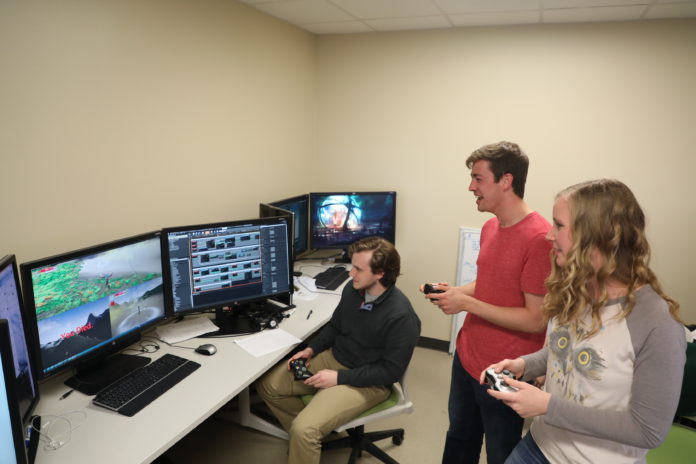
By Samantha Amaro | Reporter
Baylor University is a nationally-ranked research institution, but there is more to this school than a research-based curriculum. The School of Engineering and Computer Science not only makes certain that its computer science students are prepared to go into the workforce and deal with data analysis, code and computers, but it also offers a specialization for students who want to learn how to create video games.
Dr. Matthew Fendt, a computer science lecturer, is a faculty member from the game development specialization. His specialization includes games research and artificial intelligence.
Fendt has been interested in video games since his youth, when he decided he wanted to be involved with the production of games professionally. As a faculty member, Fendt is involved with several projects, including one with several other Baylor faculty members.
Fendt and Eric Ames, assistant director for marketing and communications of ITS and Baylor Libraries and part-time lecturer from the department of museum studies, are involved with a project that determines whether video games in the classroom are more beneficial than the traditional book-and-paper technique. The project compares the tried-and-true ways of learning in classrooms to the up-and-coming new ways, such as using iPads in classrooms.
The course was specifically made for the students who want to break into the game industry after graduation. Prior to its creation, there weren’t many classes offered to help them gain experience creating and working on games.
“The students are working with a wide body of different kinds of majors,” Fendt said. “And they’re working with industry and academia, and they’re going to be publishing a product.”
Students taking the course are expected to produce real video games and get the games off the ground. This means they are are tasked with their full production value. Other classes, including art, business and music students, have been pulled in to help produce a professional-quality game.
San Antonio senior Daniel Lujan signed onto the project this semester. Even though Lujan is a composition major, he wanted experience writing music for a video game before he graduated. With the goal of putting music he composed into gameplay, he contacted the department to learn about how he could get involved with the gaming concentration.
Lujan attends meetings with student developers to continue following the plot progression, and then he drafts music that fits the proposed scenes. He said he finds inspiration from games like Mario Brothers and Happy Wars.
Lujan is determined to do all the work on his own, playing every instrument and recording each part.
“I’m going to just do synthesizer sounds on my computer,” Lujan said. “Maybe record myself playing and alter it a bit.”
Students are expected to do background research on topics such as the game’s target audience, how to create interest and how to pitch their video game at meetings with game developers. Students even attend conferences to sell their ideas or to get financial backing from companies and other conferences to demonstrate their games.
One noted product from the course is Synch, a video game available on Steam, an online gaming platform that offers thousands of games from various genres. The Baylor students’ game launched on April 10, 2017, and it is now available on the website.





